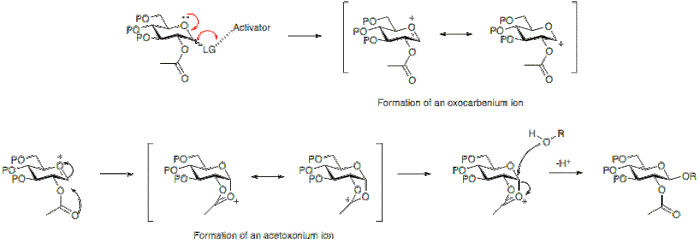Organic Chemistry
An Introduction
by Anthony Carpi, Ph.D.
To understand life as we know it, we must first understand a little bit of organic chemistry. Organic molecules contain both carbon and hydrogen. Though many organic chemicals also contain other elements, it is the carbon-hydrogen bond that defines them as organic. Organic chemistry defines life. Just as there are millions of different types of living organisms on this planet, there are millions of different organic molecules, each with different chemical and physical properties. There are organic chemicals that make up your hair, your skin, your fingernails, and so on. The diversity of organic chemicals is due to the versatility of the carbon atom. Why is carbon such a special element? Let's look at its chemistry in a little more detail. Carbon (C) appears in the second row of the periodic table and has four bonding electrons in its valence shell (see our Periodic Table module for more information). Similar to other non-metals, carbon needs eight electrons to satisfy its valence shell. Carbon therefore forms four bonds with other atoms (each bond consisting of one of carbon's electrons and one of the bonding atom's electrons). Every valence electron participates in bonding, thus a carbon atom's bonds will be distributed evenly over the atom's surface. These bonds form a tetrahedron (a pyramid with a spike at the top), as illustrated below:
| |
Carbon forms 4 bonds |
| |
Methane - a carbon atom bonded to 4 hydrogen atoms |
| |
Ethane - a carbon-carbon bond |
| |
Hexane - a 6-carbon chain |
| |
Isohexane - a branched-carbon chain |
| |
Cyclohexane - a ringed hydrocarbon |
 | ||
| Single bonding | Double bonding | Triple bonding |
Simple hydrocarbons
The simplest hydrocarbons are those that contain only carbon and hydrogen. These simple hydrocarbons come in three varieties depending on the type of carbon-carbon bonds that occur in the molecule. Alkanes are the first class of simple hydrocarbons and contain only carbon-carbon single bonds. The alkanes are named by combining a prefix that describes the number of carbon atoms in the molecule with the root ending "ane". The names and prefixes for the first ten alkanes are given in the following table.| Carbon Atoms | Prefix | Alkane Name | Chemical Formula | Structural Formula |
| 1 | Meth | Methane | CH 4 | CH4 |
| 2 | Eth | Ethane | C2H6 | CH3CH3 |
| 3 | Prop | Propane | C3H8 | CH3CH2CH3 |
| 4 | But | Butane | C4H10 | CH3CH2CH2CH3 |
| 5 | Pent | Pentane | C5H12 | CH3CH2CH2CH2CH3 |
| 6 | Hex | Hexane | C6H14 | ... |
| 7 | Hept | Heptane | C7H16 | |
| 8 | Oct | Octane | C8H18 | |
| 9 | Non | Nonane | C9H20 | |
| 10 | Dec | Decane | C10H22 |










